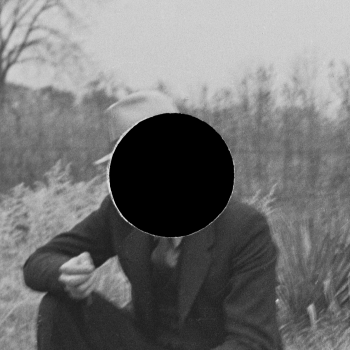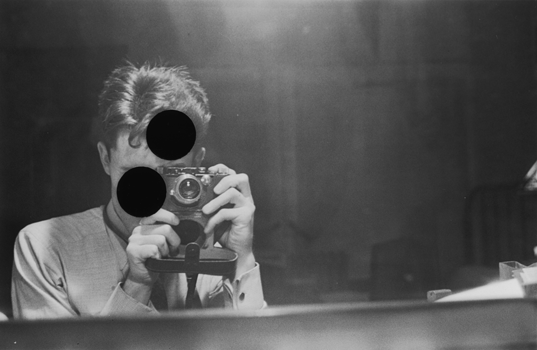William E. Jones
Punctured
September 10-October 22, 2010
Andrew Roth is pleased to present Punctured, a new movie by William E. Jones, a 4 minute, 56 second silent, sequenced loop of black-and-white digital files. Punctured is a reformatted version of his 2009 movie Killed.
William E. Jones foraged the photographic archives of the Library of Congress determined to uncover evidence of queer culture embedded in the “pictorial record of American life” created under Roy Stryker’s Farm Security Administration (1935-44). In the course of his investigation, he discovered a quantity of “killed” negatives, those Stryker destroyed with a hole puncher. It became evident that Stryker used the hole puncher as a form of censorship; Jones states: “Some of the punched holes seemed to have punished waste at the same time that they expressed an editorial preference.” After searching thousands of photographs, Jones was successful in locating 157 killed images out of approximately 68,000 Stryker rejected.
Punctured presents the digital files of 100 images in a 4 minute, 56 second sequenced loop. On the occasion of this exhibition, PPP Editions has published Killed: Rejected Images of the Farm Security Administration. Cloth-bound and printed in tri-tone, the suite of killed images are organized alphabetically by photographer: Walker Evans, Theodor Jung, Carl Mydans, Marion Post Wolcott, Arthur Rothstein, Ben Shahn, and John Vachon. Alongside these images, Jones includes a selection from John Collier Jr., Russell Lee, and David Myers that illustrate possible evidence of homosexuality within the main stream. He states: “Many (perhaps even most) viewers would find in the archive not a trace of homosexuality, but I refused to believe that it was completely absent from the visual record of the Great Depression. An historical queer presence must have been documented, if only unconsciously or accidentally, by the photographers of the FSA.”
“Puncture Wounds,” the first of two critical essays Jones has contributed to the book, discusses the Library of Congress’s image archive that began as the Resettlement Administration (1935-37), the Farm Security Administration (1937-42), and then the Office of War Information (1942-44) and he hypothesizes on what motivated Stryker to kill certain negatives; though he emphasizes: “More pertinent to the subject of this book, the practice of socially committed documentary photography has fallen into disfavor at an historical moment when it is needed again … we don’t even know we are in a depression, because no one has given us an image of it.” In his second essay, “Perversion,” Jones advocates reinterpreting history utilizing publicly accessible image archives, in essence perverting them, since “they have become so encrusted with conventional pieties that we can hardly see them any longer … [the FSA collection] is not a memorial or a temple with dogma for us to obey, but a site for reinvention.”
William E. Jones is a Los Angeles–based artist and filmmaker. His work was included in the Nordic Pavilion at the 53rd Venice Biennale in 2009. His films and videos were the subject of retrospectives at Tate Modern, London, in 2005 and Anthology Film Archives, New York, in 2010. He has published the following books: Is It Really So Strange? (2006), Tearoom (2008), Selections from The Anatomy of Melancholy by Robert Burton (2008) and Heliogabalus (2009). He is currently working on a biography of the gay-porn filmmaker Fred Halsted to be published in fall 2011 by Semiotext(e).

